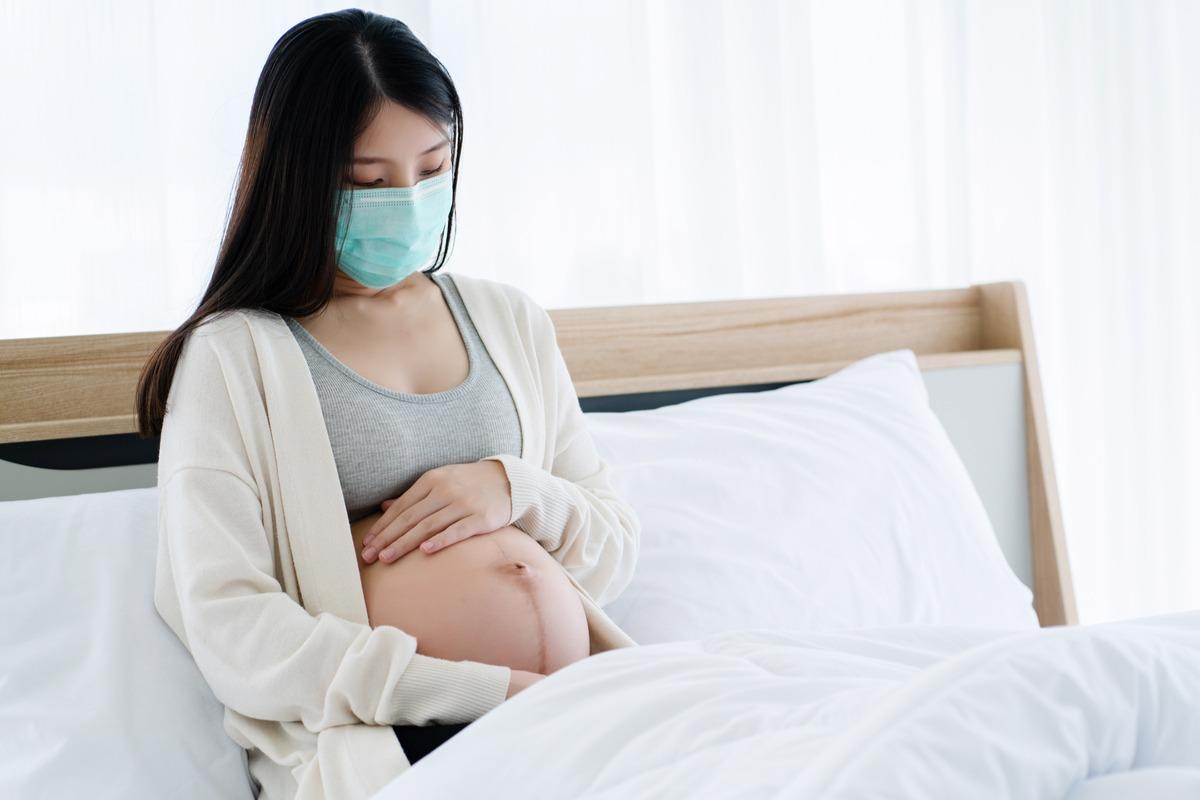
Pregnancy predisposes to a heightened risk for infection. Previously, available data on coronaviruses and other ribonucleic acid (RNA) respiratory viruses suggested rare occurrences of transplacental infection if any.
Previous studies related to the newly emerged severe acute respiratory syndrome coronavirus 2 (SARS-CoV-2) which has caused the current coronavirus disease 2019 (COVID-19) pandemic disclosed that the majority of infected mothers were either asymptomatic or had mild symptoms, and the SARS-CoV-2 infection did not increase the risk for perinatal mortality.
 Study: Placental Tissue Destruction and Insufficiency from COVID-19 Causes Stillbirth and Neonatal Death from Hypoxic-Ischemic Injury: A Study of 68 Cases with SARS-CoV-2 Placentitis from 12 Countries. Image Credit: Rapeepat Pornsipak/Shutterstock
Study: Placental Tissue Destruction and Insufficiency from COVID-19 Causes Stillbirth and Neonatal Death from Hypoxic-Ischemic Injury: A Study of 68 Cases with SARS-CoV-2 Placentitis from 12 Countries. Image Credit: Rapeepat Pornsipak/Shutterstock
With time and increased transmission of the novel coronavirus strain, genome-developed mutations and new variants of concern (VOCs) have emerged. The newer strains posed additional threats and now the disease has been shown to render adverse pregnancy outcomes, which includes severe illness of the mother followed by neonatal complications.
Until recently, researchers from different nations had not detected any statistically significant effect of COVID-19 and the incidence of stillbirth. This finding uncovered itself with the increasing spread of newer VOCs during the successive waves of the pandemic.
Poor materno-fetal outcomes were first reported in Ireland and then in England, mid-last year. These deleterious effects were confirmed by the end of 2021 by the United States Centers for Disease Control and Prevention (U.S. CDC) – through a population-based study, which also revealed the association of stillbirth with COVID-19 was the highest during the Delta variant predominance.
The objective of a recent study published in the Archives of Pathology and Laboratory Medicine was to evaluate the role of the placenta in causing stillbirth and neonatal death post-maternal COVID-19 and confirmed placental positivity for SARS-CoV-2.
This was a multinational case-based retrospective clinicopathological analysis that was conducted to explain the etiopathogenesis of fetal and neonatal fatality following maternal SARS-CoV-2 infection.
Findings
Overall, 64 stillbirths and four neonatal cases of fatality were included from 12 countries. Among the stillbirths included, vertical SARS-CoV-2 transmission could be confirmed in two cases, whereas, among neonatal fatalities, three were speculated to be of in utero transmission, and in the other, it was unlikely. Interestingly, no clinical or pathological findings could attest to a significant role of SARS-CoV-2 infection in precipitating fetal or neonatal death in this cohort.
SARS-CoV-2 placentitis was detected in 97% of the placentas. Two of the three live cases were preterm deliveries with excessive perivillous fibrin deposition, along with trophoblast necrosis, whereas the third placenta was detected with robust recent infarcts, as well as decidual vessel thrombi, in addition to intervillositis of the chronic histiocytes and trophoblast necrosis.
Increased fibrin deposits were present in all placentas with stillbirth and neonatal death, while massive perivillous fibrin deposition (MPFD) was found in 93% of the cases.
Chronic histiocytic intervillositis was diagnosed in 97% of the cases; among these, 94% exhibited excessive perivillous fibrin deposition. Meanwhile, villous trophoblast necrosis was found in all placentas – stillbirths and neonatal deaths.
Overall, villitis was found in 32% of the placentas, of which 18% were associated with maternal vascular malperfusion; 10% with antemortem fetal vascular malperfusion; and 13% with acute chorioamnionitis. Other abnormalities were less common, such as – placental infarcts, chorangiosis, chronic chorioamnionitis and umbilical vessel thrombi.
Additionally, 23 placentas were below the 10th percentile of weight, according to their gestational weight. The mean extent of tissue involvement by the infection was deduced as 77.7%. While the median and mean values estimated for placental involvement—representing destructive components rendered by the infection—were 80% (range 35-80%).
In addition, all cases had at least one positive test result for SARS-CoV-2. Most commonly, the syncytiotrophoblast was involved and stained positive. Other villous cells rarely tested positive for SARS-CoV-2. Death usually occurred at 30 weeks of gestation; whereas, the time of delivery of the stillbirths ranged between 15 weeks and 39.2 weeks of gestation. However, 13% of stillbirth cases were delivered full term. Whereas, all four neonatal fatality cases were delivered preterm – having a mean gestational age of 30.8 weeks, with an average of 3.5 days’ survival post-partum.
Of note, most autopsies failed to show a fetal abnormality. The most frequently detected pathology was intrauterine hypoxia and asphyxia – found in five out of the 30 autopsy cases. No gross microscopic abnormalities were identified in the autopsy, signifying tissue inflammation or necrosis precipitated by the viral infection.
Conclusion
The results of this study indicated that placental insufficiency was likely responsible for perinatal deaths in cases with SARS-CoV-2 placentitis. SARS-CoV-2 placentitis can lead to robust placental damage due to destructive lesions, which can be exacerbated in the setting of abnormalities. Fetal hypoxia can be a deleterious effect of COVID-19 during pregnancy, that can result in hypoxic-ischemic fetal demise or neonatal death.
Incidentally, this pathogenetic sequelae is rare and occurs in a small percentage of pregnant women who acquire SARS-CoV-2 infection.